#san francisco– henry lo
Explore tagged Tumblr posts
Text
Les Demoiselles d’ Avignon
Les Demoiselles d’ Avignon #aperturaintelectual #vmrfaintelectual @victormanrf @Victor M. Reyes Ferriz @vicmanrf @victormrferriz Víctor Manuel Reyes Ferriz
16 DE JULIO DE 2024 Les Demoiselles d’ Avignon POR: VÍCTOR MANUEL REYES FERRIZ El día de hoy celebramos o festejamos 108 años de poder disfrutar una de las obras icónicas del ceramista, dibujante, escultor y pintor malagueño Pablo Ruiz Picasso, me refiero a “Les Demoiselles d’ Avignon” (Las señoritas de Aviñón), de la cual, existen algunas historias fascinantes comenzando por el nombre, pasando…
#AperturaIntelectual#vmrfaintelectual#cabaret parisino “Chat Noir” (El gato negro)#calle de Barcelona “Carrer d’Avinyó”#ciudad francesa de Avignon#Escritora e historiadora Victoria Charles#estudio Bateau-Lavoir#Etapa Azul de Picasso#Etapa Cubista de Picasso#Etapa Protocubista de Picasso#Exposición General de Bellas Artes de Madrid#Facultad de Bellas Artes de San Fernando#Fundación Canal#Fundación Picasso Museo Casa Natal de Málaga#Henri Marie Raymond de Toulouse-Lautrec-Montfa#Isidre Nonell Monturiol#La Coruña#Les Demoiselles d’ Avignon#Obra "Ciencia y caridad"#Obra "La primera comunión"#Obra “El burdel filosófico”#Obra “Mi burdel”#Pablo Diego José Francisco de Paula Juan Nepomuceno Cipriano de la Santísima Trinidad Ruiz Picasso#Pablo Ruíz Picasso#taberna “Els Quatre Gats” (Los cuatro gatos)#Víctor Manuel Reyes Ferriz#VMRF
2 notes
·
View notes
Text
Minor MLB Transactions: 12/20/24

Catching up on some minor league moves in the past few weeks…
The Washington Nationals signed right-hander Patrick Weigel to a minor league deal. A towering 6-6 reliever, Weigel has just four games of major league experience with the Braves and Brewers, but since his last game in ’21, he’s become something of a vagabond, exploring the North American continent. Since that season, he’s spent time with the Mariners’ AAA team, the Kansas City Monarchs of the American Association, the Mexican League, and the Reds’ organization, where he pitched in the second half of last year. However, his performance in the Dominican Winter League likely impressed the Nationals. Over 18 games with the Estrellas Orientales, he has a 22-to-5 K/BB ratio and a dominating 0.95 ERA. Those walk numbers are especially notable because he’s had a rough time with command throughout his minor league career, so he looks to have figured those troubles out. It is not known if he will receive an invite to Spring Training.
The Mariners have signed converted reliever Sauryn Lao and catcher Jacob Nottingham to minor-league contracts. Lao was signed by the Dodgers in 2016 out of the Dominican Republic as a corner infielder, but after six seasons where he didn’t make it above High-A, the Dodgers converted him to a pitcher in 2023. He took off from there, with a fabulous 57-to-7 KK/B ratio over 42 1/3 innings with Rancho Cucamonga two years ago. In 2024, he made it to AAA where he struggled, but was much better at AA in 20 games. Seattle will further try to develop the right-hander, who is still just 24. Nottingham is no stranger to the Mariners, as this is now his fourth stint with the organization. He’s best known for flipping from the Brewers to the Mariners to the Brewers and back to the Mariners in rapid succession on waivers in 2021. This resulted in an added clause in the new Collective Bargaining Agreement that prevented a team from claiming the same player twice in the same season and became known as the Jacob Nottingham Rule. He spent the past three seasons in the minor leagues of four major league teams and 2024 in the Mexican League. Nottingham is a below-average hitter, but he knows the organization, and the Mariners don’t have much-catching depth behind Cal Raleigh and de facto designated hitter Mitch Garver, and top prospect Harry Ford is expected to begin the season in the minor leagues.
Right-handed reliever Enyel De Los Santos has signed a minor league contract with the Atlanta Braves, according to his MiLB player page. EDLS is just two years removed from being a massive part of the Guardians’ bullpen in 2023. However, last season was a complete 180 following a trade to the Padres in November. His first half left something to be desired, and San Diego decided to trade him to the Yankees. That trade proved ill-fated as he put together a disastrous 14.21 ERA in just five games, capped off by a seven-run blowup against the White Sox, where he was left out to save the bullpen. That performance led to an unsurprising DFA, but the team who battered him around decided to show sympathy and claimed him off waivers. His time in Chicago went better, but the team still non-tendered him last month. The most significant change for the soon-to-be-26-year-old was his drastic increase in home runs allowed. He gave up the most home runs among all full-time relievers with 17, nearly doubling his career total (21) until this season. He’d had previously a slightly below-average groundball rate coming into 2024, but his 35.7% rate was a precipitous drop, with the league average being 44.4%. This startling decrease could be attributed to a slight pitch usage change between ’23 and ’24. In his sparkling 2023, he used a four-seamer 60.5% of the time and a slider 30.4% but altered that to utilizing the four-seamer just 49.4% of the time and bumping up the slider to 42.9%. This change negatively impacted both pitches and their run value and could explain the homer troubles he experienced. The Braves will try to get De Los Santos to return to his pre-2024 form, and if able, he can be an extremely important contributor to the back end of the bullpen.
The Phillies signed a trio of players — catcher Payton Henry and two Colombian right-handed pitchers, Nabil Crismatt and Guillo Zuñiga to minor league contracts. Henry, the 27-year-old, has just 20 games of major league experience with the Marlins between 2021 and 2022. He spent last season in the Blue Jays organization but had his season derailed in late May by a scary injury where he was struck in the head during a game by a backswing and was stretchered off the field, effectively ending his year. Henry is a decent hitter and a solid defender who should get a shot to challenge Garrett Stubbs for the backup catcher spot, but most likely will be used as depth at Triple-A. Crismatt is a veteran who’s seen action in each of the past five seasons. Between ’21 and ’22, he was an essential piece to the Padres bullpen as a multi-inning reliever, but since then, he’s bounced around from team to team, with occasional major league action. He’s been impressive in 10 starts for the Gigantes del Cibao of the Dominican Winter League to the tune of a 2.34 ERA in 50 innings. The Phillies have their rotation mostly set, but the last spot could be up for grabs after Taijuan Walker’s disappointing 2024. Zuñiga, 26, is a hard thrower who was once involved in the Atlanta Braves international signings scandal of 2017, where the team’s general manager and international scouting director resigned, and twelve players were released from their contracts. He will fortify the Phillies’ relief depth and try to reel in his homer-prone tendency that has plagued him in his limited major league action.
The Athletics signed left-hander Ben Bowden to a minor league deal. The 30-year-old’s major league experience is limited to 39 games out of the bullpen in 2021 with Colorado. Unsurprisingly, he struggled pitching at high elevations and was designated for assignment the following April. Since then, he’s had stints in the Rays, Giants, Phillies, and Braves organizations without big-league action. In 2024, he pitched in 27 games with Gwinnett, Atlanta’s Triple-A team, to a 4.03 ERA and solid strikeout results. He will join a team that does not have much stability in its bullpen outside of shutdown closer Mason Miller. Additionally, he has some history pitching at the A’s new stadium in West Sacramento. He spent time pitching for the River Cats in the second half of 2022.
The Rangers signed lefty Michael Plassmeyer to a minor league contract. The Missouri native also received an invite to Spring Training. In 2024, he pitched to a 7.93 ERA in 28 games with the Pirates Triple-A affiliate. He’s been a starter for almost all of his minor league career, but this past season was the first time he began pitching out of the bullpen. Command is the foremost part of the veteran’s game. He walked just 13 in 70 1/3 innings last year. Plassmeyer has seen major league action for just three games between 2022 and 2023. He’ll look to change that in 2025 with a solid exhibition performance.
Catcher Sebastián Rivero has signed a minor league deal with the Angels. The Venezuelan is a glove-first backstop who joins an organization that needs catching depth. Behind Logan O’Hoppe and Travis d’Arnaud are limited options aside from Rivero and recent waiver claim Chuckie Robinson. He will look to return to the major leagues in 2025 for the first time since 2022 with the Royals.
The Padres signed mashing outfielder Moisés Gómez to a minor league contract. He has yet to make his major league debut. Still, the right-handed hitter is known for leading the minor leagues in 2022 with 39 home runs between Double-A and Triple-A in the Cardinals’ organization and then hitting 30 dingers the following season. Surprisingly, in 2024, he hit just three home runs in 41 games before being released in July. This power outage may have been unrelated to an unknown injury that required Gomez to miss a month in the middle of May. The Cardinals decided to move on from the slug-less slugger, and he signed with the Kansas City Monarchs of the American Association for the final month of their season. But during the Venezuelan Winter League season, his power has returned to its normal state for the Bravos de Margarita as he has 14 homers in 43 games. This performance interested the Padres, who have been notoriously thin in the outfield and currently have Tirso Ornelas, Trenton Brooks, and Brandon Lockridge, who have a combined 41 big-league plate appearances among them, as their projected options outside of Jackson Merrill and Fernando Tatis Jr. Gómez could undoubtedly be a candidate for one of the last bench spots with a continuation of his strong winter league performance into Spring Training.
The Yankees have signed a left-handed hitting 26 year-old outfielder, unfortunately not named Juan Soto, but instead Ismael Munguia, to a minor league contract. The 5-7 Nicaraguan became a minor league free agent at the end of the season after eight years in the Giants’ organization and now lands on a new team. Munguia is a career .294 hitter with 80-grade contact skills and impressive speed, becoming very popular among fans. In Spring Training 2024, he hit .410 but didn’t make the team despite winning the Barney Nugent Award, given to the stand-out player in their first Spring Training with the Giants. It’s unknown if Munguia will receive an invite to camp, but it will provide solid outfield depth for a team plagued by injuries in recent years.
Junior Fernández and the Kansas City Royals are in agreement on a minor league contract with an invite to big league camp, according to the team. The righty was once a high-level relief prospect coming up through the Cardinals’ system but never panned out due to injuries and ineffectiveness. He signed with the Chiba Lotte Marines of the NPB in December 2023 but only pitched in two games before undergoing shoulder surgery and getting released in July. Evidently, he’s healthy now and will try to crack the Royals’ bullpen that was a liability in 2024.
Former Phillies’ first baseman Darick Hall has signed a minor league contract with the Pittsburgh Pirates, according to the Lehigh Valley Iron Pigs on social media and reflected in his Instagram bio.The Iron Pigs franchise leader in home runs and RBIs moves onto a new organization after nine seasons with the Phillies. Hall, 29, is a mashing lefty with a solid eye for a power hitter whose major league career has been marked by unfortunate timing of injuries. In 2023, following Rhys Hoskins suffering a torn ACL, Hall went down with an injury of his own just six games into the season that required surgery and a two-month rehab. By the time he was back to full strength, Bryce Harper had taken over as the team’s first baseman, and Hall was sent to the minors, where he would spend nearly the rest of the season and all of 2024. The Pirates are looking for a replacement at first base for Rowdy Tellez, who disappointed the team to the point that his own fans booed him and ultimately was released before the end of the season. The candidates at the cold corner behind projected starter and recent trade acquisition Spencer Horwitz are pretty unproven. On the 40-man roster, only Jared Triolo (9 games) and Billy Cook (5 games) have any experience playing first.
Veteran left-hander Enny Romero has reportedly agreed to a minor league contract with the San Francisco Giants, according to El Nacional reporter Mike Rodriguez on social media and seemingly confirmed by Romero, himself in the comments on Instagram. Romero debuted in 2013 with the Rays and last played in the major leagues in 2018 with the Royals. He’s appeared in 137 games (1 start) across five seasons spent with Tampa Bay, Washington, Pittsburgh, and Kansas City. Since his last major league action, he pitched in Japan for Chunichi and Chiba Lotte in the NPB and a brief stint back stateside with the Dodgers for Spring Training in 2021. However, since 2022, he’s only pitched in the Dominican Winter League, where he has been a mainstay for many years. In 2024, he’s been pitching for the Aguilas Cibaenas, where familiar major leaguers are omnipresent, including former Giant Johnny Cueto, who is still kicking and has started three games. Romero has shined in eight starts thus far to a 1.10 ERA and 38 strikeouts to 14 walks in 41 innings and, according to Rodriguez’s report, is a candidate to win the league’s Pitcher of the Year award. The Giants will bring in the 33-year-old Dominican and give him a chance to return to El Gran Carpa (The Big Tent) for the first time in seven years if he can keep up the good work.
#mlb#patrick weigel#sauryn lao#jacob nottingham#enyel de los santos#payton henry#nabil crismatt#guillo zuniga#ben bowden#michael plassmeyer#sebastian rivero#moises gomez#ismael munguia#junior fernandez#darick hall#enny romero#washington nationals#seattle mariners#atlanta braves#philadelphia phillies#athletics#texas rangers#los angeles angels#san diego padres#new york yankees#kansas city royals#pittsburgh pirates#san francisco giants
0 notes
Text
Pink is for Boys
"Pink or Blue? Which is intended for boys and which for girls? This question comes from one of our readers this month, and the discussion may be of interest to others. There has been a great diversity of opinion on this subject, but the generally accepted rule is pink for the boy and blue for the girl. The reason is that pink, being a more decided and stronger color, is more suitable for the boy, while blue, which is more delicate and dainty, is prettier for the girl." ~ The Infants' Department, June 1918

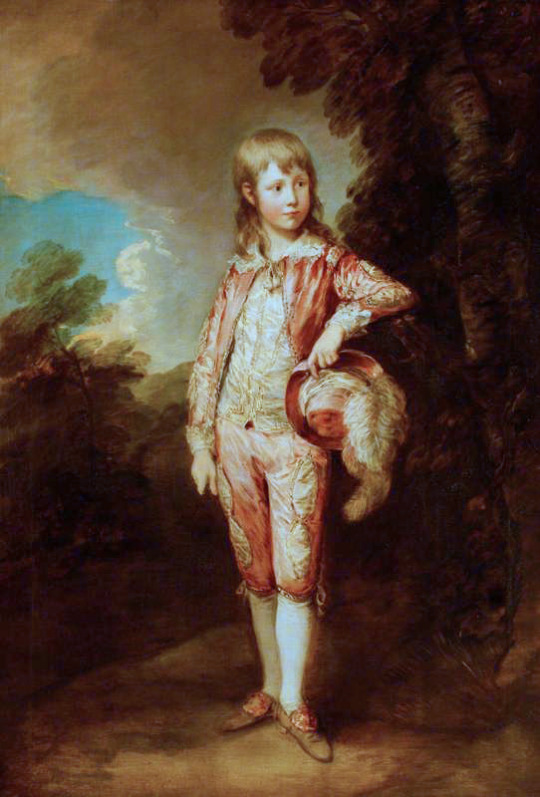
[Left: The Blue Boy, oil on canvas, c. 1770, by Thomas Gainsborough.
Right: The Pink Boy, oil on canvas, c. 1782, by Thomas Gainsborough.]
Pink is for girls and blue is for boys. But it hasn't always been this way. Colour coding infants as a way of denoting gender was popular in 20th century America. The problem? Pink and blue? Which is for boys and which is for girls?
In 1927 TIME Magazine asked ten of the "leading stores that sell baby equipment" which colour was for which gender. Four stores responded pink for girls and blue for boys; Macy's (Manhattan), Franklin Simon (Manhattan), Wanamaker's (Philadelphia) and Bullock's (Los Angeles). Five stores responded pink for boys and blue for girls; Best's (Manhattan), Marshall Field's (Chicago), Filene's (Boston), Maison Blanche (New Orleans) and The White House (San Francisco). Curiously Halle's (Cleveland) responded that pink was for both boys and girls.
This debate would continue and it wasn't until mid-20th century that pink for girls and blue for boys became firmly cemented in western culture.
However the idea of colour coding infants dates back to the 19th century. According to La cour de Hollande sous le règne de Louis Bonaparte in 1808 in Holland pink was used to announce the birth of a girl and blue a boy. In March 1856 Peterson's Magazine (Philadelphia, USA) advises that the ribbon on a christening cap should be blue for a boy and pink for a girl. On the 23rd of July 1893 the New York Times writes that for baby clothes it's "pink for a boy and blue for a girl!"

[The Oddie Children, oil on canvas, c. 1789, by William Beechey, via North Carolina Museum of Art.]
During the latter half of the 18th century one of the most popular outfits for young children, regardless of gender, was a white dress with a coloured sash tied around the waist. Pink and blue being the most popular colours, although other colours were worn as well. It would be tempting to assume that the colour of the sash indicated gender but there isn't clear evidence that this was the case. The Oddie Children (above) depicts Sarah, Henry, Catherine, and Jane Oddie. The three girls are all wearing white dresses; two with a blue sash one with a pink sash. We also see Henry Russell (bellow left) wearing a blue sash and Prince William (bellow right) wearing a pink sash.
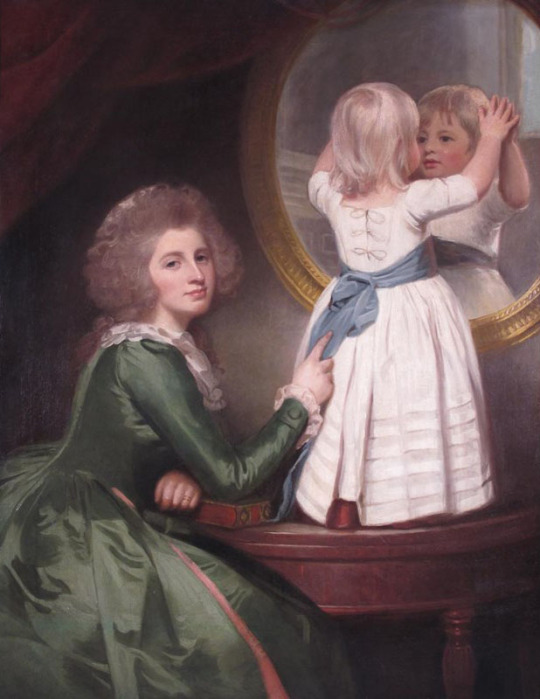
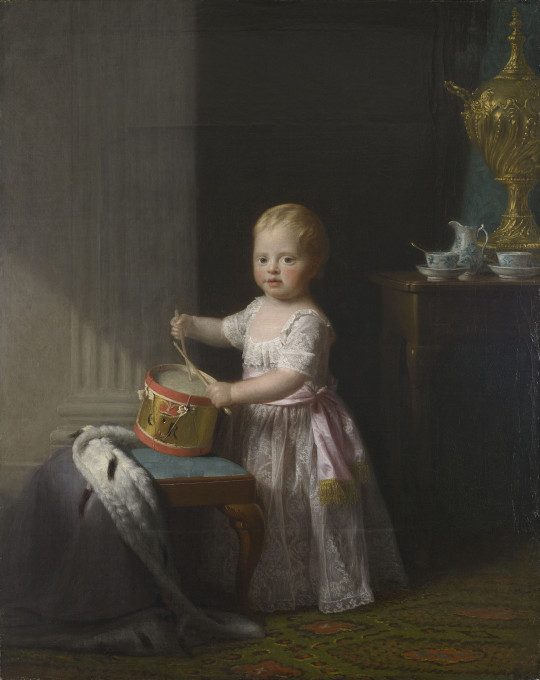
[Left: Anne Barbara Russell née Whitworth with her son Sir Henry Russell, oil on canvas, c. 1786, by George Romney, via Woolley & Wallis.
Right: Prince William, oil on canvas, c. 1767, by Allan Ramsay, via the Royal Collection Trust.]
Pink was just one of the many colours popular in 18th century English womenswear and seems to have stayed popular throughout the century. On the 3rd of January 1712 The Spectator published an article in which a man recalls seeing "a little Cluster of Women sitting together in the prettiest coloured Hoods that I ever saw. One of them was Blew, another Yellow, and another Philomot; the fourth was of a Pink Colour, and the fifth of a pale Green". On the 1st of May 1736 the Read's Weekly Journal, or British Gazetteer reports that the ladies attending the royal wedding wore gowns of "Gold stuffs, or rich Silks with Gold or Silver Flowers, or Pink or White Silks, with either Gold or Silver Netts or Trimmings;" shoes either "Pink, White or Green Silk, with Gold or Silver Lace and braid all over." On the 24th of May 1785 Charles Storer writes to Abigail Adams advising that fashionable colours in English court dress are "pink, lilac, and blue" such "as is worn at Versailles".
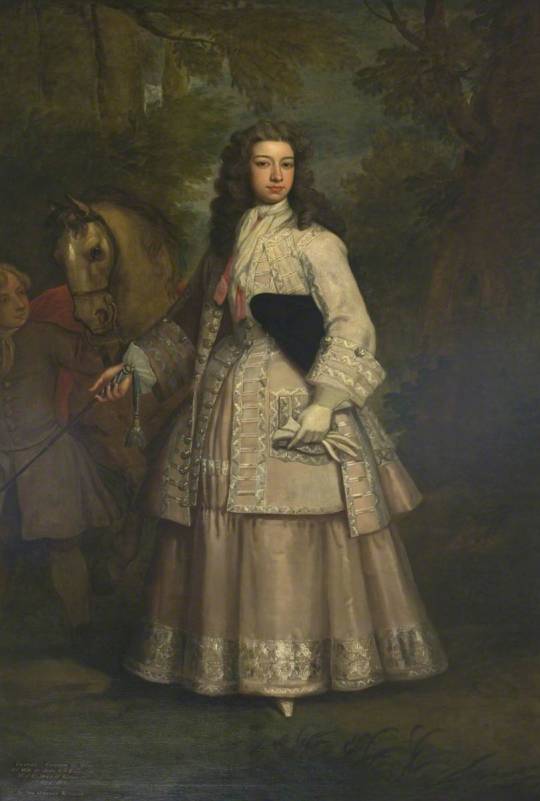
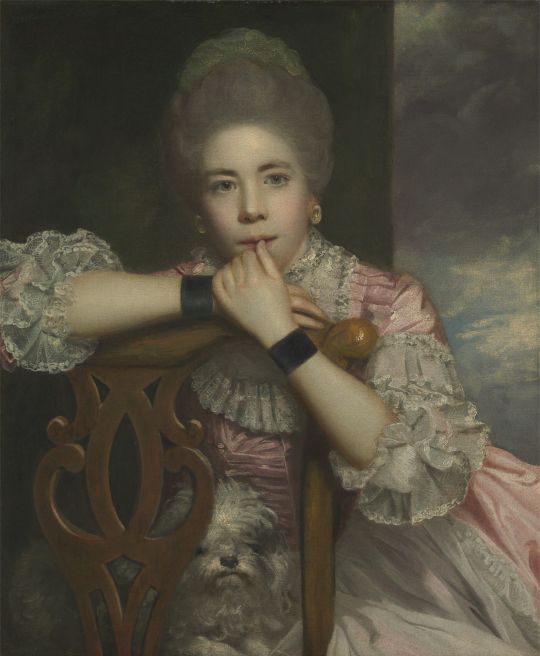

[Left: Frances, Daughter of Evelyn Pierpont, 1st Duke of Kingston, oil on canvas, c. 1700-23, by Godfrey Kneller, via Art UK.
Middle: Mrs. Abington as Miss Prue in "Love for Love" by William Congreve, oil on canvas, c. 1771, by Sir Joshua Reynolds, via Yale Center for British Art.
Right: Mary Little, later Lady Carr, oil on canvas, c. 1765, by Thomas Gainsborough, via Yale Center for British Art.]
In particular pink was popular amongst young women as the colour was associated with youth. Older women who wore pink were mocked as vain for dressing in a way that was seen as improper for their age. On the 31st of January 1754 Lady Jane Coke writes to Mrs. Eyre criticising old women who wear pink:
As for fashions in dress, which you sometimes inquire after, they are too various to describe. One thing is new, which is, there is not such a thing as a decent old woman left, everybody curls their hair, shews their neck, and wears pink, but your humble servant. People who have covered their heads for forty years now leave off their caps and think it becomes them, in short we try to out-do our patterns, the French, in every ridiculous vanity.
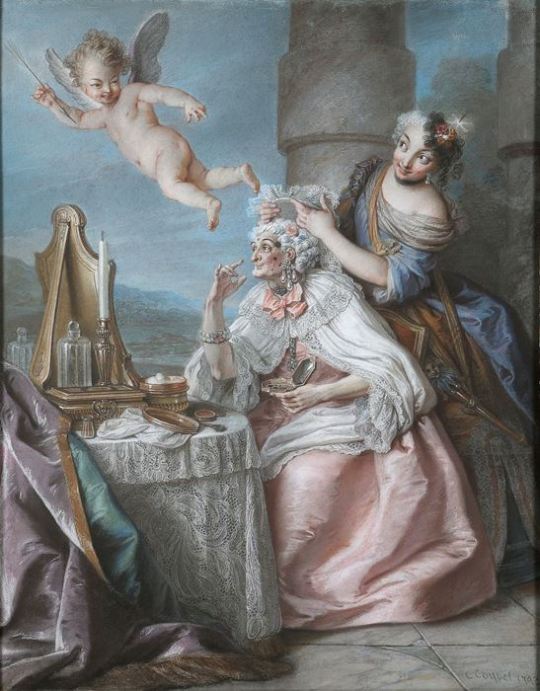
[Folly Embellishing Old Age With the Adornments of Youth, oil on canvas, c. 1743, by Charles-Antoine Coypel, via Master Art.]
For Englishmen acceptable clothing way much more limited. In A Foreign View of England in the Reigns of George I & George II Monsieur César de Saussure writes that Englishmen "do not trouble themselves about dress, but leave that to their womenfolk". He explains:
Englishmen are usually very plainly dressed, they scarcely ever wear gold on their clothes; they wear little coats called "frocks," without facings and without pleats, with a short cape above. Almost all wear small, round wigs, plain hats, and carry canes in their hands, but no swords. Their cloth and linen are of the best and finest. You will see rich merchants and gentlemen thus dressed, and sometimes even noblemen of high rank, especially in the morning, walking through the filthy and muddy streets.
César de Saussure warns that "a well-dressed person in the streets, especially if he is wearing a braided coat, a plume in his hat, or his hair tied in a bow, he will, without doubt, be called "French dog" twenty times perhaps before he reaches his destination" and is not only at risk of "being jeered at" but also "being bespattered with mud, but as likely as not dead dogs and cats will be thrown at him."

[Reverend Charles Everard Booth, Captain Griffith Booth, and an Unidentified Man playing Billiards, oil on canvas, c. 1775-9, by John Hamilton Mortimer, via the Royal Collection Trust.]
For Englishmen dressing "plainly" mostly meant wearing blacks and browns. In his book on macaroni, Pretty Gentleman, Peter McNeil found that in contrast most English menswear that he describes as generally consisting of "monochrome broadcloth" macaroni wore a variety of colours including green, orange, yellow, violet, red, white, blue, gold, silver and of course pink.
But it's not just the macaroni of the 1770s & 1780s that wore pink. We see pink in descriptions of feminine men's dress (both real and fictional) throughout the 18th century.
On the 2nd of June 1722 Sarah Osborn writes to Robert Byng:
I believe the gentlemen will wear petticoats very soon, for many of their coats were like our mantuas. Lord Essex had a silver tissue coat, and pink color lutestring waistcoat, and several had pink color and pale blue paduasoy coats, which looked prodigiously effeminate.
On the 18th of October 1729 the Universal Spectator and Weekly Journal published a story where an "effeminate" man's clothes were described as follows:
He had a flower'd pink-colour Silk Coat, with a Green-Sattin Waistcoat lac'd with Silver. Velvet Breeches, Clock'd Stockings the Colour of his Coat, Red-heel'd Pumps, a Blue Ribbon at the Collar of his Shirt, and his Sword-Hilt he embrac'd under the Elbow of his Left Arm,

[Sir Miles Stapylton, 4th Bt of Myton, oil on canvas, c. 1730-35, via Art UK.]
In The Adventures of Roderick Random (1748) the effeminate (and queer coded) Captain Whiffle is described as follows:
our new commander came on board in a ten-oared barge, overshadowed with a vast umbrella, and appeared in everything the reverse of Oakum, being a tall, thin young man, dressed in this manner: a white hat, garnished with a red feather, adorned his head, from whence his hair flowed upon his shoulders, in ringlets tied behind with a ribbon. His coat, consisting of pink-coloured silk, lined with white, by the elegance of the cut retired backward, as it were, to discover a white satin waistcoat embroidered with gold, unbuttoned at the upper part to display a brooch set with garnets, that glittered in the breast of his shirt, which was of the finest cambric, edged with right Mechlin: the knees of his crimson velvet breeches scarce descended so low as to meet his silk stockings, which rose without spot or wrinkle on his meagre legs, from shoes of blue Meroquin, studded with diamond buckles that flamed forth rivals to the sun! A steel-hilted sword, inlaid with gold, and decked with a knot of ribbon which fell down in a rich tassel, equipped his side; and an amber-headed cane hung dangling from his wrist. But the most remarkable parts of his furniture were, a mask on his face, and white gloves on his hands, which did not seem to be put on with an intention to be pulled off occasionally, but were fixed with a curious ring on the little finger of each hand.

[Henry Ingram, 7th Viscount Irwin and His Wife Anne, oil on canvas, c. 1745, by Philippe Mercier, via Art UK.]
On the 28th of July 1780 the London Courant reports:
A few days ago, a Macaroni made his appearance in the Assembly-room at Whitehaven, in the Following dress: a mixed silk coat, pink sattin waistcoat and breeches, covered with an elegant silver nett, white silk stockings with pink clocks, pink sattin shoes and large pearl buckles, a mushroom coloured stock, covered with a fine point lace; his hair dressed remarkably high, and stuck full of pearl pins.
On the 6th of August 1792 The Weekly Entertainer published Sketches and Portraits form the Life by Simon Tueopnrastus which included the following description:
Mercator was a youth of some genius and expectation, but by a strange perverseness of disposition, notwithstanding the extreme natural stiffness of his limbs, he had acquired an early attachment to the most finical and effeminate finery; so that, while yet a boy, he would exhaust every expedient of a fertile invention to procure a laced waistcoat, or the most foppish toy; would dangle a watch-string, with brass seals, from each fob, at a time when the frugal care of his parents would not permit him to wear a watch in either; and would strut in a fine pair of second-hand pink silk breeches, and a light blue coat, with all the formal dignity of—a soldier upon the parade.


[Left: Thomas King in "The Clandestine Marriage", oil on canvas, c. 1792, by Samuel De Wilde, via Yale Center for British Art.
Right: Edward Payne, oil on canvas, by Arthur Devis, via Art UK.]
While pink is mentioned in these descriptions of feminine men's dress it's not singled out as the girl colour the way pink would become in the 20th century. I would argue pink is seen as effeminate not because pink is a uniquely feminine colour but because it was used in fashionable dress. In 18th century England being interested in fashion was seen as an frivolous female trait. Men who showed too much interest in fashion were mocked and ridiculed for their gender nonconformity. "A Man must sink below the Dignity of his Nature, before he can suffer his Thoughts to be taken up on so trivial an Affair, as the Chosing, Suiting, and Adjusting the Adornments of his Person," complains a letter published on the 8th of May 1731 in Read's Weekly Journal, or British Gazetteer:
Decency of Garb ought inviolably to be preserved; nor can there be possibly an Excuse for Dressing like a Merry-Andrew: Rich and coloured Silks are in themselves effeminate, and unbecoming a Man; as are, in short, all Things that discover Dress to have been his Study 'Tis in vain for a Fop of Quality, to think his Title will protect him.


[Left: Madame de Pompadour (detail), oil on canvas, c. 1756, by François Boucher, via Alte Pinakothek.
Right: Elizabeth Wrottesley, later Duchess of Grafton, oil on canvas, c. 1764-5, by Thomas Gainsborough, via National Gallery of Victoria.]
English fashion was highly influenced by French fashion. A popular colour scheme in French fashion was green and pink. A famous example of this colour pairing can be seen in François Boucher's portrait of Madame de Pompadour (above left), she is depicted in a green gown with pink bows and flowers. You can see and example of how this style inspired English fashion in Thomas Gainsborough's portrait of Elizabeth Wrottesley (above right), who is depicted in a green gown with a floral pattern adorned with pink, white and green striped bows.
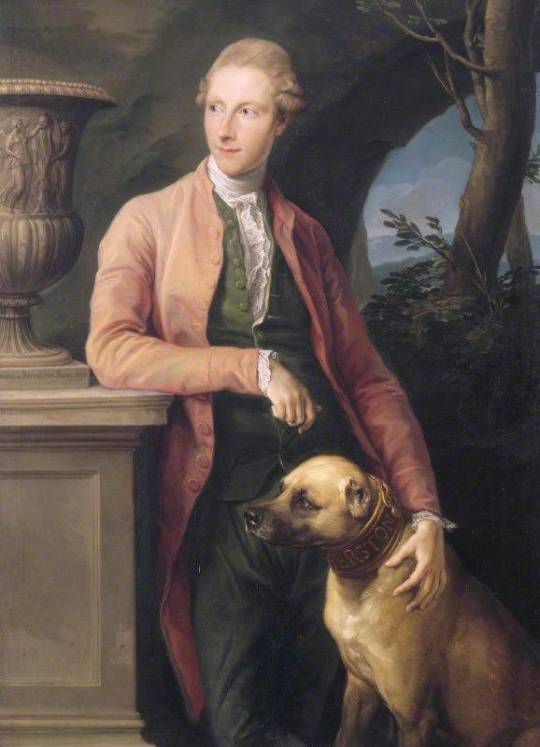
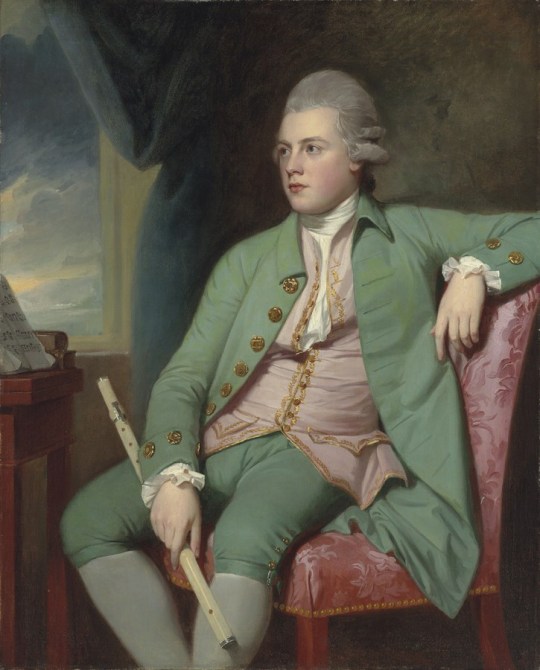
[Left: Sir Harry Fetherstonhaugh, oil on canvas, c. 1776, by Pompeo Batoni, via Wikimedia.
Right: Francis Lind, oil on canvas, c. 1775, by George Romney, via Mackinnon Fine Art.]
Fashionable Englishmen were also inspired by these French designs. Horace Walpole refers to the popularity of the colour combination writing to Lady Ossory on the 19th of February 1774 "If I went to Almack's and decked out my wrinkles in pink and green like Lord Harrington, I might still be in vogue". Almack's is referring to Almack's Assembly Rooms on Pall Mall which is believed to be the inspiration for the Macaroni Club. (see Pretty Gentleman by Petter McNeil p52-55) In a letter to Lord Harcourt on the 27th of July 1773 Walpole writes of "Macaronis lolling out of windows at Almack's like carpets to be dusted."
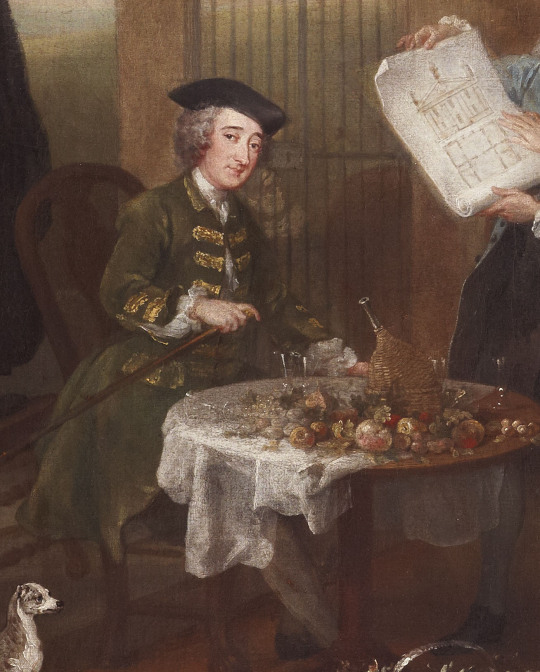

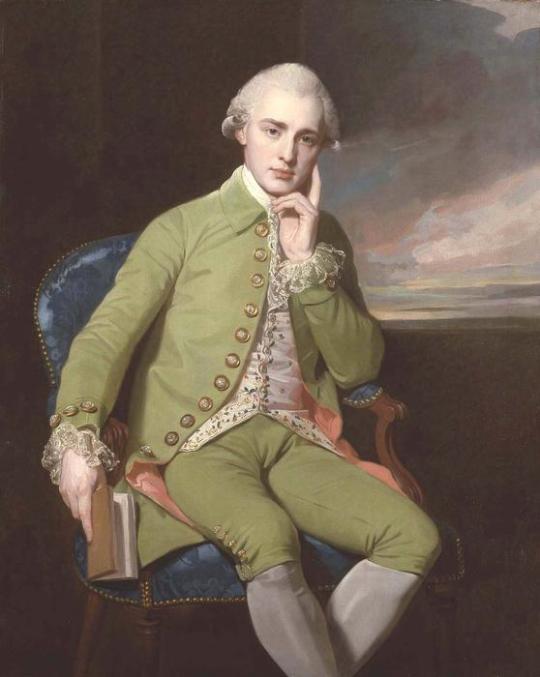
[Left: Detail of Stephen Fox from The Hervey Conversation Piece, oil on canvas, c. 1738-40, by William Hogarth, via Fairfax House.
Middle: Sir William Jones, oil on canvas, c. 1769, by Francis Cotes, via Art UK.
Right: Portrait of a Gentleman, oil on canvas, by George Romney.]
Men who wore green seem to have been just as much, if not more, at risk of being ridiculed, or even assaulted, for the colour of their clothes as those who wore pink. In Pierre Jean Grosley's A Tour to London (originally published 1772) he recalls traveling with a young English surgeon who was harassed by Londoners due to his green French frock coat:
At the first visit which he paid me in London, he informed me, that, a few days after his arrival, happening to take a walk thro' the fields on the Surry side of the Thames, dressed in a little green frock, which he had brought from Paris, he was attacked by three of those gentlemen of the mobility, who, taking him for a Frenchman, not only abused him with the foulest language, but gave him two or three slaps on the face: "Luckily, added he in French, I did not return their ill language; for, if I had, they would certainly have thrown me into the Thames, as they assured me they would, as soon as they perceived I was an Englishman, if I ever happened to come in their way again, in my Paris dress."
246 notes
·
View notes
Text






























portrayals of bats in the 20th & 21st centuries
Bat Cabaret Sign - France - wrought iron, rolled iron, carved and embossed, green glass
pair of bats - ivory seal - China
Rene Lalique (French, 1860-1945) - bat brooch - 1900
bat design - Bijutsukai (Art World) - vol. 2 - 1901-1902
Rene Lalique (French, 1860-1945) - bat ring - 1901
Rene Lalique (French, 1860-1945) - bat pendant - 1901
Ferdinand Erhart (French, active 1891-1933) - Bat Belt Buckle - cast silver, carved and oxidized - 1908
Bat Brooch - France - c.1908
Henri Husson (French, 1852-1933) - Cup with Bat - c.1909
Ohara Koson (Japanese, 1877-1945) - Bats In Moonlight - c.1910
Harrison Cady (American, 1877-1970) - illustration for Mother West Wind Why Stories by Thornton Burgess - 1915
John Buckland Wright (British, 1897-1954) - illustration for Le Sphinx by Iwan Gilkin - 1919
Heinrich Kley (German, 1863-1945) - illustration for Der Orchideengarten (The Orchid Garden) - 1919
Bats and Crescent Moon - incense box - Japan - early 20th century
Weird Tales - October 1933
Black Bat Firecrackers
Edward Gorey (American, 1925-2000) - Bat & Ballerina - pin - New York City Ballet - c.1970s
Edward Gorey (American, 1925-2000) - Bats & Bicycles stencil illustration from The Broken Spoke - 1976
Edward Gorey (American, 1925-2000) - cover illustration for A Clutch of Vampires by Raymond T. McNally
Three of Bats - Tarot Card - 1996
Richard Cooluris (American, working in San Francisco) - Perseus and the Bat - mixed media painting on wood panel - 2016
Yegor Smirnov (working in Montreal) - Bat Ring - 3d-printed and casted in silver - 2016
Stephanie Inagaki (working in Los Angeles) - Trinity - charcoal & gold foil
Adam Binder (British, b.1970) - Bats - carved ebony & carved ivory
Wayan Tuges (luthier working in Indonesia) - Raised by Bats - Commemorative custom Blueberry guitar for Aurelio Voltair - 2020
#art by others#other's artwork#sculpture#painting#jewelry#lamp#guitar#illustration#box#drawing#tarot#book cover#pin#firecracker#seal#René Lalique#Ferdinand Erhart#Henri Husson#Ohara Koson#Edward Gorey#Harrison Cady#John Buckland Wright#Heinrich Kley#Yegor Smirnov#Stephanie Inagaki#Adam Binder#Wayan Tuges#Richard Cooluris
45 notes
·
View notes
Text
“Las mentiras más crueles son dichas en silencio”
Robert Louis Stevenson

Robert Louis Balfourd Stevenson, también conocido como Robert L. Stevenson o R.L. Stevenson fue un novelista, cuentista, poeta y ensayista británico nacido en Edimburgo Escocia en noviembre de 1850.
Su legado es una vasta obra que incluye crónicas de viaje, novelas de aventuras e historias fantásticas de aventuras como “La Isla del Tesoro” y la popular novela de horror “El extraño caso del Dr. Jekyll y Mr. Hyde”.
Robert Louis fue hijo único de una familia presbiteriana. Su padre era abogado y constructor. Buena parte de su familia eran ingenieros constructores de faros.
Ingresó a la Universidad de Edimburgo como estudiante de Ingeniería Náutica, influido más por su padre que por gusto propio, sin embargo, se licenció en derecho, aunque poco ejerció la abogacía.
Tanto la salud de Robert como la de su madre, se vió siempre debilitada por enfermedades respiratorias, el clima escocés de veranos frescos e inviernos lluviosos y nublados fueron siempre muy inconvenientes para ellos.
En los años de su adolescencia, Robert acompañó a su padre en sus frecuentes viajes, lo que le permitió adquirir inspiración para sus obras posteriores.
En 1875 comenzó a practicar la abogacía aunque su verdadero interés se centraba en el estudio de la lengua.
Para 1876 aparecieron los primeros síntomas de tuberculosis y por esas mismas fechas a la edad de 26 años conoció en Francia a Fanny Osbourne, una norteamericana separada diez años mayor que él con quien contrajo matrimonio en 1880 a la edad de 30 años.
El matrimonio se mudó a Edimburgo, luego a Davos Suiza, y posteriormente se instalaron en una finca adquirida por su padre en el balneario de Bournemouth. Fue por entonces que se dió a conocer como novelista con la publicación de su primera novela “La Isla del Tesoro” en 1883.
Vivió en su patria hasta 1887 y fue durante esos años que publicó dos de sus novelas mas populares; “La flecha negra” y “Raptado” y en 1886 una obra maestra del terror fantástico titulada “El extraño caso del Dr. Jekyll y Mr. Hyde”.
Vivieron un tiempo en Nueva York, en donde Robert conoció e hizo amistad con Mark Twain y con Henry James. Tras una breve estancia en San Francisco, decidieron realizaron un viaje hacia las islas del Pacífico Sur.
En 1889 llegaron a las islas de Samoa en donde construyeron una casa para establecerse.
Varias de sus novelas posteriores trataron sobre las islas del pacífico, como The Wreker en 1892, Island Nights en 1893 y En los mares del sur en 1896.
Stevenson Muere de un derrame cerebral en diciembre de 1894 en su casa de Vailima Samoa, y fue enterrado en la cima del monte Vaea con vista al mar.
Fuentes: Wikipedia, infolibros.org, biografiasyvidas.com
#citas de reflexion#frases de reflexion#citas de poetas#frases de poetas#citas de escritores#escritores#robert louis stevenson#novelista#citas de la vida
9 notes
·
View notes
Text
Jarvis tapes on Jason’s life (or at least what the footage tells you) 🎞️

Jason Grayson Underwood was born at twelve-oh-one a.m., April 20th, 1922
at Children's Hospital, San Francisco,
the second child of Fran and Jonathan Underwood. His sister Dolores Marie Underwood only be 5 years old.
On the 16th of June in 1929, Mr & Mrs. Underwood would divorce taking both children their separate ways.
~~~~
August 30th 1943, Howard Stark and his sister Elizabeth Stark would come into the picture, change his life forever.
Meeting both of them during the war, alongside Agent Margaret ‘Peggy’ Carter. Who would later on become his sister in more ways than one.
Eighty-seven days later Jason met James Bucky Barnes and The Howling Commanders, crossing paths on the battle field with Captain America.
~~~~
After the war ended, Jason Underwood went on to work for the SSR. He had the opportunity to work selling watches in Texas and New York, but went on to become an associate of the organization.
Which is where he met Agent Jack Thompson, Daniel Sousa and plenty of others.
However he had another job underneath his belt as him, Edwin Jarvis and Agent Carter were given a job to locate Howard Stark’s stolen items while he hide away.
The whole time, half of the country was after him.
That’s when he would met his sister once again, Dottie Underwood, A Black Widow. As she worked with an scientist and Soviet spies to frame Stark’s items as dangerous as they seemed.
It was complicated.
He was not pleased and made sure his sister was behind bar for her crimes, with working for the wrong side. But she did not care, she never did.
He shot the scientist and spies with the help of the SSR who realized who was responsible for all of this.
They freed Howard and his sister from all charges. Jack Thompson became Chief Executive Officer in New York City.
But they all know Peggy Carter deserves all the credit for the job.
Daniel Sosua was promoted to Chief in California.
~~~~~
In 1947 New York City, Chief Jack Thompson and Agent Peggy Carter of the Strategic Scientific Reserve (SSR) apprehend Soviet spy Dottie Underwood.
Newly appointed Chief Daniel Sousa of the Los Angeles SSR office meets with Detective Andrew Henry, who has discovered a woman's body in a frozen lake during a heat wave.
That’s when Jason Underwood was called from his newly acquired home in Los Angeles for the job, requesting Agent Carter to sign onto the job.
Howard and his Elizabeth Stark were living in Los Angeles as well, making films and creating new inventions for their company.
~~~~
Ten weeks after filming a new movie Howard was creating and working on the case, Jason was driving north one night to his shared studio beach cottage when something highly unusual occurred, something almost magical...
Snow fell in Los Angeles, California. Heavy winds and hail stormed all into one. The car swing over the slippery slope of the bridge as he drove onto the main water, as he tried to pull up.
But failed to get the brakes to work.
The immersion in the frigid water caused Jason's body to go into an anoxic reflex, instantly stopping his breathing and slowing his heartbeat.
Within 2 minutes, Jason Underwood's core temperature had dropped to 87 degrees...
his heart stopped beating.
He was silent underneath the table of water for 7 minutes.
At 11: 55 a bolt of lightning struck the vehicle discharging half a billion volts of electricity and producing 60,000 amperes of current.
Its effect was threefold.
First, the charge defibrillated Jason Undwood's heart.
Second,
He was jolted out of his anoxic state causing him to draw his first breath in 3 minutes.
Third, based on Von Lehman's principle of electron compression in deoxyribonucleic acid, which will be discovered in the year two thousand thirty-five, Jason Underwood will henceforth be immune to the ravages of time...
he will never age another day.
~~~~~
Of course, he didn’t know that would be a harsh yet effective condition until later.
Wrapped in a cold sweat, dizziness and fatigue were the consequences of the accident.
He was in bed for a few days at the house or made to be sat down, as a nurse took his temperature while he helped study the case.
A field of zero matter and Whitney Frost, 2 times Oscar nominee who was a scientist at heart, was behind it. They hoped it wouldn’t be the rest of mission and the caseload conditions that harmed them.
But faith had other plans.
Peggy took the rest, after her painful defeat of almost being impaled by the help,to call Jason’s sister Dottie for undercover work.
It wasn’t the best thing, but worked like a charm. Dottie left getting her cut of the money and ran.
Soon enough, Jason, Peggy and others were up for the challenge to help finish the race in their job. It was a long and difficult process for the entire team but they made it work.
Zero matter was seemingly gone. Whitney Frost was put in prison.
~~~
Weeks went by.
He studied long and hard for weeks, working with Howard, Peggy, Dr. Wilkie Jones and Ana Jarvis on cases. Figure out the answer to the questions they had from their previous research on the mission.
And the effects left behind.
Jason found nothing on his plate of studies onto what happened to him, as the years went by he noticed his friends slowly turning around with age, as he stayed the same.
It wasn’t zero matter or the previous time on trips that harmed him.
It was something else.
Some would see it differently, thinking it as a blessing that he stopped aging, others might’ve called it a curse.
It just depends on who you were talking to.
For Jason, he made the blonde sick to his stomach and want to hide behind closed doors.
As the years passed, Jason credited her unchanging appearance to a combination of a healthy diet, exercise, heredity, and good luck.
He would travel around, change his name and mind. Leave for a couple of weeks every new decade.
It was all to prevent confusion, controversy and added pressure from anyone who might’ve wanted to sent him to a lab to be tested for his status. 
To protect himself and his loved ones…
~~~~
~~~~~~~
// There’s a tale. Remember to like, comment and reblog.
|| Tags: @missstrawbs2001 @purpleprincessonfyre @meiramel @gcthvile @ask-starrk @rickb-chaos @gaminggirlsstuff @wizzzardofoz @cherrysft @luna-d-marsh @sherloquestea @rooster-84 and etc
#marvel oc#age of adaline#jarvis tapes recordings#jason underwood#agent carter oc#carterwood#dottie underwood#howard stark#edwin jarvis#glen powell#agents of shield#marvel x oc#mcu ocs#oc intro#agent carter#peggyweek2024#daniel sousa#jack thompson
16 notes
·
View notes
Text






USS IOWA (BB-4) near San Francisco, California.
Photographed by Henry Hebard West, 1872-1958.
Date: 1898
University of California, Los Angeles. Library: uclamss_1998_0920_003, uclamss_1998_0917_001, uclamss_1998_0920_004, uclamss_1998_0920_001, uclamss_1998_0923_001, uclamss_1998_000263_001
#USS Iowa (BB-4)#Predreadnought#Battleship#Warship#Ship#United States Navy#U.S. Navy#US Navy#USN#Navy#San Francisco#California#West Coast#1898#undated#my post
35 notes
·
View notes
Text
Today is trans day of remembrance. The day we and the world honor the memory of the transgender people whose lives were lost in acts of anti-transgender violence.
Today we remember the 37 known trans people killed in the the last year and the ones we will never know
Nex Benedict - Owasso, Oklahoma
The following List is courtesy of the human rights campaign
https://reports.hrc.org/an-epidemic-of-violence-2024#in-memoriam
Amiri Reid - Toledo, OH
Kejuan Richardson - Toledo, OH
Jean Butchart - Van Buren Township, MI
Savannah Ryan Williams - Minneapolis, MN
Meghan Riley Lewis - Bel Air, MD
Amber Minor - Rayton, MO
Kitty Monroe - Phoenix, AZ
Righteous “TK” Chevy Hill - East Point, GA
Diamond Brigman - Houston, TX
Alex Franco - Taylorsville, UT
Meraxes Medina - Los Angeles, CA
Africa Parrilla Garcia - San Juan, PR
Tee “Lagend Billions” Arnold - Hallandale Beach, FL
River Nevaeh Goddard - Stow, MA
Andrea Doria Dos Passos - Miami, FL
Sasha Williams - Las Vegas, NV
Starr Brown - Memphis, TN
Kita Bee - Kansas City, MO
Reyna Hernandez - Renton, WA
Brandon “Tayy Dior” Thomas - Mobile, AL
Michelle Henry - San Francisco, CA
Yella (Robert) Clark Jr. - Angola Prison, LA
Jazlynn Johnson - Las Vegas, NV
Liara Tsai - Minneapolis, MN
Pauly Likens - Sharon, PA
Shannon Boswell - Atlanta, GA
Kenji Z. Spurgeon - Seattle, WA
Monique Brooks - Orlando, FL
Dylan Gurley - Denton, TX
Tai’Vion Latham - Baltimore, MD
Vanity Williams - Houston, TX
Redd (Barbie) - Chicago, IL
Kassim Omar - Columbus, OH
Honee Daniels - Rochester, NY
Santonio “San” Coleman - Athens, GA
Quanesha Shantel (“Cocoa”) - Greensboro, NC
4 notes
·
View notes
Text

Iglesia San Francisco de San Borja.
La ex capilla del Sagrado Corazón de Jesús del Hospital San Borja, es una edificación religiosa diseñada por el arquitecto Hovender Henry, construida en 1876 en estilo neogótico.
Era utilizada por los carabineros hasta antes del estallido social donde fue quemada y vandalizada.
#tumblr chilensis#chile#instachile#nikon#photography#fotografia#fotografía#santiago#iglesia#church#burned#quemada#incendio#carabineros#pacos
3 notes
·
View notes
Text
THIS DAY IN GAY HISTORY
based on: The White Crane Institute's 'Gay Wisdom', Gay Birthdays, Gay For Today, Famous GLBT, glbt-Gay Encylopedia, Today in Gay History, Wikipedia, and more … November 21



Transgender Day Of Remembrance (since 1999) set aside to memorialize those who were killed due to anti-transgender hatred or prejudice (transphobia). The event is held on November 20, founded by Gwendolyn Ann Smith, to honor Rita Hester, whose murder in 1998 kicked off the "Remembering Our Dead" web project and a San Francisco, California candlelight vigil in 1999. Since then, the event has grown to encompass memorials in hundreds of cities around the world.

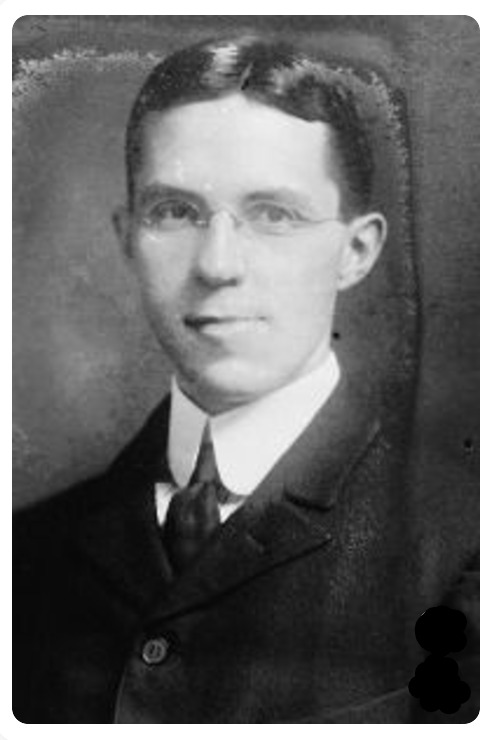
1873 – Daniel Gregory Mason, American composer, born (d.1953); Mason came from a long line of notable American musicians, including his father Henry Mason. He studied under John Knowles Paine at Harvard University from 1891 to 1895, continuing his studies with George Chadwick and Goetschius. In 1894 he published his Opus 1, a set of keyboard waltzes, but soon after began writing on music for his primary career. He became a lecturer at Columbia University in 1905, where he would remain until his retirement in 1942, successively being awarded the positions of assistant professor (1910), MacDowell professor (1929) and head of the music department (1929-1940). He was the lover of composer-pianist John Powell.

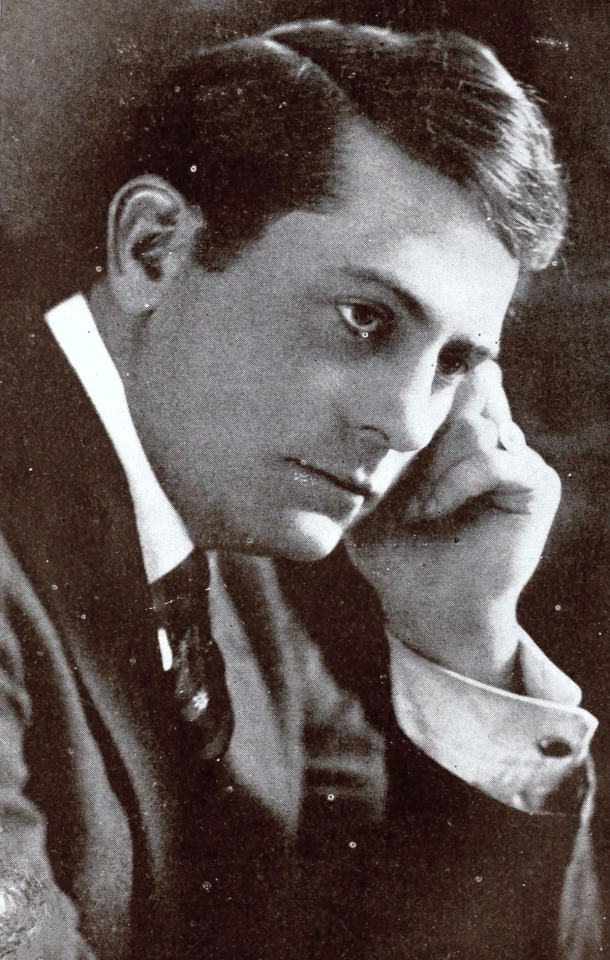
1883 – Edwin August (d.1964) was an American actor, director and screenwriter of the silent era. He appeared in 152 films between 1909 and 1947. He also directed 52 films between 1912 and 1919. He co-founded Eaco Films in 1914.
Edwin was born Edwin August Phillip von der Butz in St. Louis, Missouri, to August and Sarah Butz. He was educated at the Christian Brothers College.
He began working with Biograph Studios in New York as early as 1908 and moved to Hollywood with that company in 1910. He starred in several films by D. W. Griffith, who was also with the company, and continued to work well into the 1930s as a writer and director.
In 1916, he entered his name as a candidate for President of the United States, and spoke out against censorship in cinema. The candidate wasn't taken very seriously, and perhaps that wasn't the point. He didn't like the road that his industry was going down, and wanted to voice his opinion in the hope of change.
A co-star, Blanche Sweet, would later bluntly state: "He was a homo." He owned a chicken ranch at 648 South Figueroa in Hollywood and was friends with gay silent film star J. Warren Kerrigan and most likely Kerrigan's long time partner James Vincent.
Edwin passed away from cerebral metastatic disease on March 4, 1964 at the Motion Picture County Hospital in Woodland Hills, Los Angeles County, California.


1916 – James Pope-Hennessy (d.1974) was a British biographer and travel writer.
James Pope-Hennessy was born in London on 20 November 1916, the younger son of Ladislaus Pope-Hennessy, a soldier from County Cork, Ireland, and his wife, Una, the daughter of Arthur Birch, Lieutenant-Governor of Ceylon. He was the younger of two sons; his elder brother, John Pope-Hennessy, was an English art historian, museum director and writer of note. James came from a close-knit Catholic family and was educated at Downside School and at Balliol College, Oxford, but generally showed a lack of interest in formal education and did not enjoy his time at either Downside or Oxford.
Largely owing to his mother's influence, he decided to become a writer and left Oxford in 1937 without taking a degree. He went to work for the Catholic publishers Sheed and Ward as an editorial assistant. While working at the company's offices, in Paternoster Row in London, he worked on his first book, London Fabric (1939), for which he was awarded the Hawthornden Prize. During this period, he was involved in a circle of notable literary figures including Harold Nicolson, Raymond Mortimer and James Lees-Milne.
He left the publishers in 1938 when his mother found him a job as private secretary to Hubert Young, the Governor of Trinidad. Although his time abroad provided the material for his later West Indian Summer (1943), he disliked both the West Indies and the atmosphere of Government House. The outbreak of the Second World War gave him an excuse to return to Britain, where he enlisted as a private in an anti-aircraft battery under the command of Sir Victor Cazalet. Rising through the ranks, he was transferred to military intelligence, given a commission and spent the latter part of the war as a member of the British army staff at Washington.
Pope-Hennessy enjoyed his time in the United States and made many friends there. After the end of the war he wrote an account of his experiences in America. On his return to London in 1945 he shared a flat with the British intelligence officer Guy Burgess, who later defected to the Soviet Union. He had a brief spell as the literary editor of The Spectator between 1947 and 1949, before he decided to travel to France and write Aspects of Provence, which was published in 1952.
He would eventually establish himself as one of the leading biographers of his time; his first effort in this direction being a two-volume biography of Monckton Milnes that appeared in 1949 under the titles The Years of Promise and The Flight of Youth. This was followed by further biographies of the Earl of Crewe and of Queen Mary, for which he was created Commander of the Royal Victorian Order in 1960. He also wrote a life of his grandfather, the colonial governor John Pope Hennessy, under the title Verandah (adapted as a documentary for BBC Television under the title "Strange Excellency", 1964), followed by an account of the Atlantic slave traffickers, Sins of the Fathers (1967).
In 1970, he took out Irish citizenship and went to live at Banagher in County Offaly, and during the next few years produced authoritative biographies of both Anthony Trollope and Robert Louis Stevenson. Trollope himself had chosen James' grandfather, John Pope Hennessy, as the basis for the character Phineas Finn in his novel of the same name. Robert Louis Stevenson was published posthumously and without revision in 1974. He became a popular figure in Banagher, evidenced by the fact that he was asked to adjudicate at a local beauty pageant and the horse fair, the oldest in Ireland. On being given a large advance he returned to London in 1974 to begin work on his next subject, Noël Coward.
Despite being a successful professional writer, Pope-Hennessy was careless with money. He suffered a series of financial crises and often relied on the goodwill of friends to get him by. A homosexual, he was a heavy drinker and frequented back-street bars and shady pubs where he mixed with a rough crowd, associations that eventually contributed to his death when he was brutally murdered on 25 January 1974 in his London flat by three young men. He had been sexually acquainted with one of them.


1941 – Oliver Sipple, the man who saved President Gerald Ford's life, was born today.
Sara Jane Moore attempted to assassinate U.S. President Gerald Ford outside the St. Francis Hotel in San Francisco, just seventeen days after Lynette "Squeaky" Fromme had also tried to kill the president. Moore was forty feet away from Ford when she fired a single shot at him. The bullet missed the President because bystander Oliver Sipple grabbed Moore's arm and then pulled her to the ground, using his hand to keep the gun from firing a second time. Sipple said at the time: "I saw [her gun] pointed out there and I grabbed for it. I lunged and grabbed the woman's arm and the gun went off." The single shot which Moore did manage to fire from her .38-caliber revolver ricocheted off the entrance to the hotel and slightly injured a bystander.
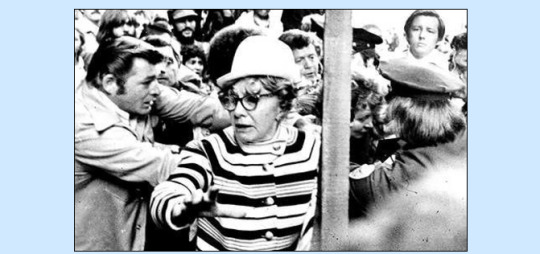
Sipple goes for the gun.
Sipple, a decorated Marine and Vietnam War veteran, was immediately commended by the police and the Secret Service for his action at the scene. The news media portrayed Sipple as a hero but would eventually report on his outing by Harvey Milk and other San-Francisco gay activists. Though he was known to be Gay by various fellow members of the gay community, Sipple had not made this public, and his sexual orientation was a secret from his family. He asked the press to keep his sexuality off the record, making it clear that neither his mother nor his employer had knowledge of his orientation; however, his request was not complied with.
The national spotlight was on him immediately, and Milk responded. While discussing whether the truth about Sipple's sexuality should be disclosed, Milk told a friend: "It's too good an opportunity. For once we can show that Gays do heroic things, not just all that ca-ca about molesting children and hanging out in bathrooms." Milk contacted the newspaper.
Several days later Herb Caen, a columnist at The San Francisco Chronicle, exposed Sipple as a Gay man and a friend of Milk. Sipple was besieged by reporters, as was his family. His mother, a staunch Baptist in Detroit, refused to speak to him. Although he had been involved with the Gay community for years, even participating in Gay Pride events, Sipple sued the Chronicle for invasion of privacy. President Ford sent Sipple a note of thanks for saving his life. Milk said that Sipple's sexual orientation was the reason he received only a note, rather than an invitation to the White House.
Sipple filed a $15 million invasion of privacy suit against Caen, seven named newspapers, and a number of unnamed publishers, for publishing the disclosures. The Superior Court in San Francisco dismissed the suit, and Sipple continued his legal battle until May 1984, when a state court of appeals held that Sipple had indeed become news, and that his sexual orientation was part of the story.
According to a 2006 article in The Washington Post, Sipple went through a period of estrangement with his parents, but the family later reconciled with his sexual orientation. Sipple's brother, George, told the newspaper, "(Our parents) accepted it. That was all. They didn't like it, but they still accepted. He was welcomed. Only thing was: Don't bring a lot of your friends."
Sipple's mental and physical health sharply declined over the years. He drank heavily, gained weight to 300 lb (140 kg), was fitted with a pacemaker, became paranoid and suicidal. On February 2, 1989, he was found dead in his bed, at the age of forty-seven. Earlier that day, Sipple had visited a friend and said he had been turned away by the Veterans Administration hospital where he went concerning his difficulty in breathing. His $334 per month apartment near San Francisco's Tenderloin District was found with many newspaper clippings of his actions on the fateful September afternoon in 1975. His most prized possession was the framed letter from the White House.
Sipple held no ill will toward Milk, and remained in contact with him. The incident brought him so much attention that, later in life, while drinking, he would regret grabbing Moore's gun. Sipple, who was wounded in the head in Vietnam, was also diagnosed paranoid schizophrenic according to the coroner's report.
Sipple's funeral was attended by 30 people, and he was buried in Golden Gate National Cemetery in San Bruno, California. A letter addressed to the friends of Oliver Sipple was on display for a short period after his death at one of his favorite hangouts, the New Belle Saloon:
"Mrs. Ford and I express our deepest sympathy in this time of sorrow involving your friend's passing..." President Gerald Ford, February, 1989
In a 2001 interview with columnist Deb Price, Ford disputed the claim that Sipple was treated differently because of his sexual orientation, saying: "As far as I was concerned, I had done the right thing and the matter was ended. I didn't learn until sometime later — I can't remember when — he was Gay. I don't know where anyone got the crazy idea I was prejudiced and wanted to exclude Gays."


1990 – A London judge convicted 14 gay men of committing criminal assaults upon themselves because of their participation in S&M. All 14 receive prison sentences.


1998 – John Geddes Lawrence and Tyrone Garner of Texas were ordered to pay fines of $125 each after being arrested for having sex in their home. The couple refused to pay and announced they would challenge the Texas sodomy law - initiating what became known as the historic "Lawrence vs Texas" Supreme Court decision which decriminalized homosexual sex.


4 notes
·
View notes
Text
Full List of Grammy 2025 Winners
The full list of 2025’s Grammy winners can be found below. Song of the Year Beyoncé – Texas Hold ’Em Billie Eilish – Birds of a Feather Chappell Roan – Good Luck, Babe! WINNER: Kendrick Lamar – Not Like Us Lady Gaga & Bruno Mars – Die With a Smile Sabrina Carpenter – Please Please Please Shaboozey – A Bar Song (Tipsy) Taylor Swift Featuring Post Malone – Fortnight Record of the Year The Beatles – Now and Then Beyoncé – Texas Hold ’Em Billie Eilish – Birds of a Feather Chappell Roan – Good Luck, Babe! Charli XCX – 360 WINNER: Kendrick Lamar – Not Like Us Sabrina Carpenter – Espresso Taylor Swift Featuring Post Malone – Fortnight Best Pop Duo/Group Performance Ariana Grande, Brandy & Monica – The Boy Is Mine – Remix Beyoncé Featuring Post Malone – Levii’s Jeans Charli XCX & Billie Eilish – Guess Featuring Billie Eilish Gracie Abrams Featuring Taylor Swift – Us. WINNER: Lady Gaga & Bruno Mars – Die With a Smile Best Latin Pop Album Anitta – Funk Generation Kali Uchis – Orquídeas Kany García – García Luis Fonsi – El Viaje WINNER: Shakira – Las Mujeres Ya No Lloran Best New Artist Benson Boone Doechii WINNER: Chappell Roan Khruangbin Raye Sabrina Carpenter Shaboozey Teddy Swims Best Country Album WINNER: Beyoncé – Cowboy Carter Chris Stapleton – Higher Kacey Musgraves – Deeper Well Lainey Wilson – Whirlwind Post Malone – F-1 Trillion Best Pop Vocal Album Ariana Grande – Eternal Sunshine Billie Eilish – Hit Me Hard and Soft Chappell Roan – The Rise and Fall of a Midwest Princess WINNER: Sabrina Carpenter – Short n’ Sweet Taylor Swift – The Tortured Poets Department Best Rap Album Common & Pete Rock – The Auditorium Vol. 1 WINNER: Doechii – Alligator Bites Never Heal Eminem – The Death of Slim Shady (Coup de Grâce) Future & Metro Boomin – We Don’t Trust You J. Cole – Might Delete Later Best Contemporary Classical Composition Andrea Casarrubios – Casarrubios: Seven for Solo Cello Decoda – Coleman: Revelry Esa-Pekka Salonen, Fleur Barron, Nicholas Phan, Christopher Purves, Axelle Fanyo & San Francisco Symphony Chorus & Orchestra – Saariaho: Adriana Mater Eighth Blackbird – Lang: Composition as Explanation WINNER: Los Angeles Philharmonic, Gustavo Dudamel & Los Angeles Master Chorale – Ortiz: Revolución Diamantina Best Classical Compendium Amy Porter, Nikki Chooi, Buffalo Philharmonic Orchestra & JoAnn Falletta – Lukas Foss: Symphony No. 1 & Renaissance Concerto Andy Akiho & Imani Winds – BeLonging Danaë Xanthe Vlasse, Royal Philharmonic Orchestra & Michael Shapiro – Mythologies II Experiential Orchestra, James Blachly & Curtis J Stewart – American Counterpoints WINNER: Los Angeles Philharmonic, Gustavo Dudamel & María Dueñas – Gabriela Ortiz: Revolución Diamantina Best Arrangement, Instruments and Vocals Cody Fry Featuring Sleeping at Last – The Sound of Silence John Legend – Always Come Back WINNER: Säje Featuring Regina Carter – Alma Willow – Big Feelings The 8-Bit Big Band Featuring Jonah Nilsson & Button Masher – Last Surprise (From “Persona 5”) Best Arrangement, Instrumental or A Cappella Béla Fleck – Rhapsody in Blue(Grass) Henry Mancini & Snarky Puppy – Baby Elephant Walk (Encore) WINNER: Jacob Collier Featuring John Legend & Tori Kelly – Bridge Over Troubled Water Säje – Silent Night Scott Hoying Featuring Säje & Tonality – Rose Without the Thorns Best Musical Theater Album WINNER: Hell’s Kitchen Merrily We Roll Along The Notebook The Outsiders Suffs The Wiz Best Spoken Word Poetry Album Malik Yusef – Good M.U.S.I.C. Universe Sonic Sinema Episode 1: In the Beginning Was the Word Omari Hardwick – Concrete & Whiskey Act II Part 1: A Bourbon 30 Series Queen Sheba – Civil Writes: The South Got Something to Say Skillz – The Seven Number Ones WINNER: Tank and the Bangas – The Heart, the Mind, the Soul Best Classical Solo Vocal Album Fotina Naumenko – Bespoke Songs Joyce DiDonato, Il Pomo d’Oro & Maxim Emelyanychev – Wagner: Wesendonck Lieder WINNER: Karen Slack & Michelle Cann – Beyond the Years Nicholas Phan, Farayi Malek &… https://chorus.fm/news/full-list-of-grammy-2025-winners/
2 notes
·
View notes
Text
Whoever saw and heard the documentary film called "Kukan" will surely remember for the rest of his life the sound of those Japanese planes when they swarmed over Chungking. And the roar of the flames afterwards, that too is unforgettable. And then silence—a silence unlike anything we have experienced. A city lying stunned and prostrate. What a harrowing silence that makes! Imagine what it will be like, should New York, San Francisco, Los Angeles and other of our big cities suffer the same fate! It won't be music to our ears, that's a cinch. But it will be sound. Even the silence will be filled with sound. It will be a sort of inter-spatial chamber music to fill the void of our unfeeling souls.
Henry Miller ֍ The Air-Conditioned Nightmare (1945)
3 notes
·
View notes
Text

Virgen con el Niño entronizado con santos
Maestro del Tríptico Panzano (italiano, activo en el siglo XIV) (Artista)
c. 1380-1400
Témpera y pan de oro sobre tabla
Trípticos plegables como este se utilizaban para la devoción privada. La Virgen y el Niño entronizados están flanqueados por (de izquierda a derecha) san Nicolás, Bartolomé, Catalina de Alejandría, Antonio Abad, Francisco y Lucía. Esta composición utiliza la metáfora de una reina rodeada de sus cortesanos para representar a la Virgen en su papel de Reina del Cielo. El pintor simuló la tela bordada en oro del trono de la Virgen rascando la pintura blanca para revelar el pan de oro subyacente, que ha sido pinchado para mejorar su reflectividad.
Debido a que pocos artistas durante este período firmaron sus obras, los eruditos a veces los identifican por su pintura más impresionante. Aquí, este maestro anónimo es conocido por un retablo que creó para una iglesia en Panzano, Toscana, Italia.
Inscripción: [Transcripción] En el pergamino sostenido por el ángel: SPIRITVS. SCS. SVP[RA. VOS]; [Traducción] Que el Espíritu Santo esté por encima de vosotros; [Transcripción] En la cruz: I.N.R.I.
Procedencia: Colección Don Marcello Massarenti, Roma [fecha y modo de adquisición desconocidos] [catálogo de 1897: n.º 64, como Escuela de Siena, principios del siglo XV]; Henry Walters, Baltimore, 1902, por compra; Museo de Arte Walters, 1931, por legado.
Geografías: Italia, Siena (Lugar de origen)
Medidas: Alto: 19 7/8 x W: 19 1/2 x D: 3/4 pulg. (50,5 x 49,5 x 1,9 cm); Superficie pintada del panel central H: 19 7/8 x W: 9 3/4 pulg. (50,5 x 24,7 cm); Superficie pintada del ala izquierda H: 18 11/16 x W: 4 13/16 pulg. (47,5 x 12,3 cm); Superficie pintada del ala derecha H: 18 11/16 x W: 4 3/4 pulg. (47,5 x 12 cm)
Línea de crédito: Adquirida por Henry Walters con la Colección Massarenti, 1902
Número de acceso: 37.728
Información e imagen de la web del museo The Walters Art Museum
2 notes
·
View notes
Text

My favorite film directed and performed by Charles Chaplin - "City Lights" (1931)
"Wandering the city streets, the Little Tramp happens upon a blind flower girl who mistakes him for a rich man. The Tramp later saves a drunken millionaire who is attempting to drown himself in the river. The millionaire becomes his best friend. That is, until he sobers up and no longer recognizes the Tramp… In City Lights, friendship and social ranking are not always as they seem. We enter a world of a disenchanted bourgeoisie, where a tramp is king and a blind girl, queen." (X)
Cast: Charlie Chaplin, Virginia Cherrill, Florence Lee, Harry Myers, Hank Mann, Eddie Baker, Allan Garcia, Henry Bergman, Albert Austin, Joe Van Metter, Robert Parrish, Charlie Hammond, Tiny Ward, Mrs. Hyams, Harry Ayers, Florence Wicks, Jean Harlow...
/The full cast of the film is 59 actors and extras./
Production :United Artists
This film was Charlie Chaplin's most labor-intensive film - it took him almost four years to shoot, from December 31, 1927 to January 22, 1931. However, the shooting itself took only 180 days. The film was shot in Los Angeles and San Francisco (California, USA).
This is Chaplin's first film in the sound era. The director himself faced great pressure to give it full sound - but he managed to leave it silent, apart from the music recorded for it. At that time, all films were made with dialogue.
The link contains information about the filming of the movie "City Light's" : (X)
#charlie chaplin#virginia cherrill#harry myers#allan garcia#albert austin#city lights#1931#silent film#classic film
3 notes
·
View notes